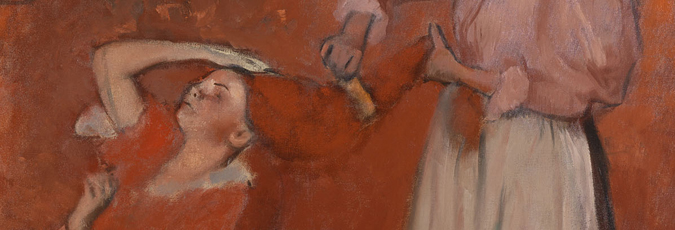Leighton and Corot
Corot’s four panels, The Four Times of Day, depict the day unfolding from the glowing morning light to the full midday sun and finally the subdued effects of moonlight. Corot painted the panels for his friend and fellow artist Alexandre-Gabriel Decamps (1803–1860), to decorate the walls of his studio in the French town of Fontainebleau. Completed in a single week, they demonstrate Corot’s impressive skill at capturing different qualities of light and integrating four images into a unified scheme.
The four paintings were once owned by Frederic, Lord Leighton, a leading figure of the Victorian art world, celebrated for his paintings and sculptures, and from 1878, President of the Royal Academy of Arts. Leighton was among the first British collectors of Corot’s work, which he acquired alongside a magnificent array of objects ranging from Middle Eastern pottery, rugs, and tapestries to Renaissance paintings and master drawings.
Aware of art’s power to convey status and prestige, Leighton displayed these items prominently in the sumptuous house he had built for himself in Holland Park, West London. He purchased Corot’s paintings in 1865, the year that construction began on the house. The panels were likely to have been incorporated into the architectural scheme from its conception, and held pride of place in the ground-floor drawing room, alerting his visitors to his refined taste and cosmopolitan background.
The paintings were acquired by the National Gallery in 2014.

